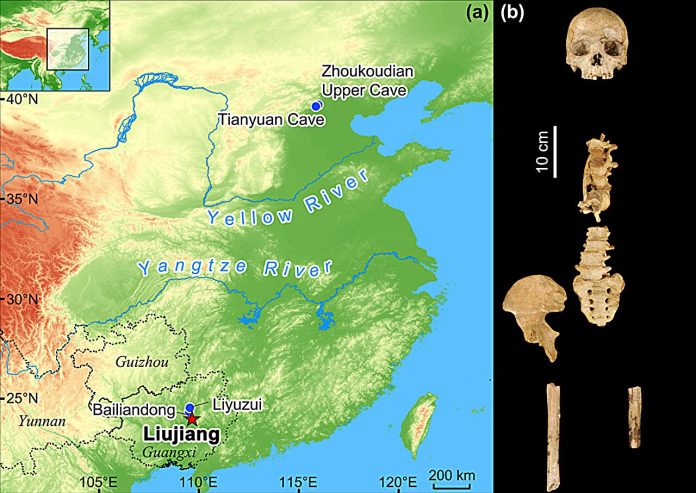
Discoveries illuminate Homo sapiens’ presence in Eastern Asia, researchers have new revelations regarding the age and provenance of Homo sapiens fossils discovered in the Tongtianyan cave, situated in the Liujiang District of Liuzhou City, Southern China
Researchers from Griffith University and the Chinese Academy of Sciences led the research. For decades, the age of these human fossils has remained a controversial issue, complicating our understanding of human distributions in Eastern Asia.
However, the research team has shed new light on this mystery by using dating techniques, including U-series dating on human fossils and radiocarbon and optically stimulated luminescence dating on fossil-bearing sediments.
Revised age of human fossils
The study’s findings, published in Nature Communications, disclose revised age estimates ranging from approximately 33,000 to 23,000 years ago, significantly changing previous assumptions.
Professor Michael Petraglia, co-author of the study and Director of Griffith’s Australian Research Centre for Human Evolution, notes that these revised dates align with other human fossils in northern China, showing a general presence of Homo sapiens across Eastern Asia post-40,000 years ago.
Dr Junyi Ge, the lead author of the study from the Chinese Academy of Sciences, highlights the implications of these discoveries, stating, “This finding holds significant implications for understanding human dispersals and adaptations in the region. It challenges previous interpretations and provides insights into the occupation history of China.”
The Liujiang human fossils
The Liujiang human fossils, discovered in 1958 and regarded as among the most significant in Eastern Asia, have offered valuable insights into our ancestors’ biology and morphology.
With incredibly preserved cranial, dental, and postcranial remains, these fossils have fueled extensive scientific inquiry and comparative analysis across Eurasia.
Dr Qingfeng Shao, of the Nanjing Normal University, added: “The findings of this study overturn earlier age estimates and palaeoanthropological interpretations, emphasising the need for robust dating methods and proper provenance documentation in the study of human evolution.”
Dr. Qingfeng Shao of Nanjing Normal University emphasises the importance of robust dating methods and detailed origin documentation in paleoanthropological studies. The study’s complete dating analyses show the role of accurate age estimations in progressing our understanding of modern human origins and dispersals.










